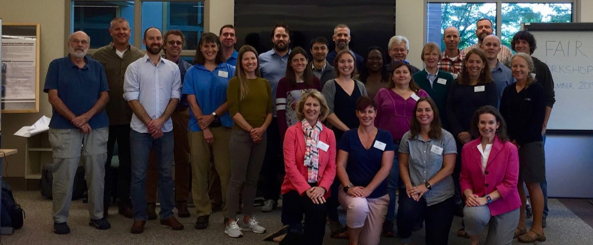Aligning International Initiatives for Promoting and Assessing FAIR Data
The Research Data Alliance (RDA) Findable, Accessible, Interoperable, Reusable (FAIR) Data Maturity Model Working Group: Aligning Initiatives for Promoting and Assessing FAIR Data.
The Research Data Alliance FAIR Data Maturity Model Working Group convened a group of experts representing national science organizations on November 19, 2020, to discuss their current initiatives to enhance the FAIRness of the science within their communities applying different approaches and the use of the FAIR Data Maturity Model as a framework for comparing results. FAIR is an acronym for a set of international principles that describe scientific products that are suitable for reuse in new scientific research. It stands for "Findable, Accessible, Interoperable, and Reusable." USGS project team includes members from American Geophysical Union and University of Tennessee as well as Southeast Region and the Office of Science Quality and Integrity.
Get Our News
These items are in the RSS feed format (Really Simple Syndication) based on categories such as topics, locations, and more. You can install and RSS reader browser extension, software, or use a third-party service to receive immediate news updates depending on the feed that you have added. If you click the feed links below, they may look strange because they are simply XML code. An RSS reader can easily read this code and push out a notification to you when something new is posted to our site.


